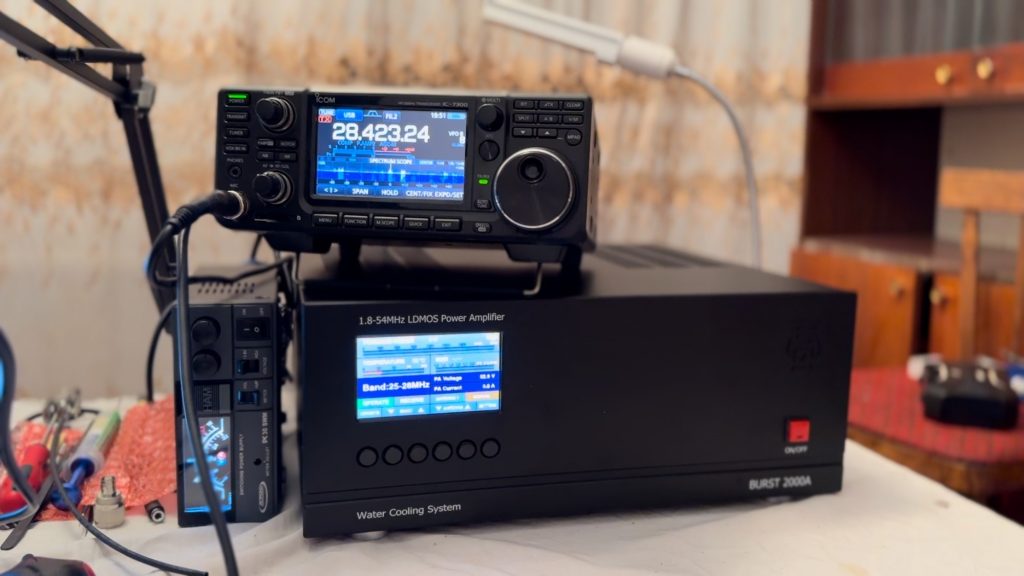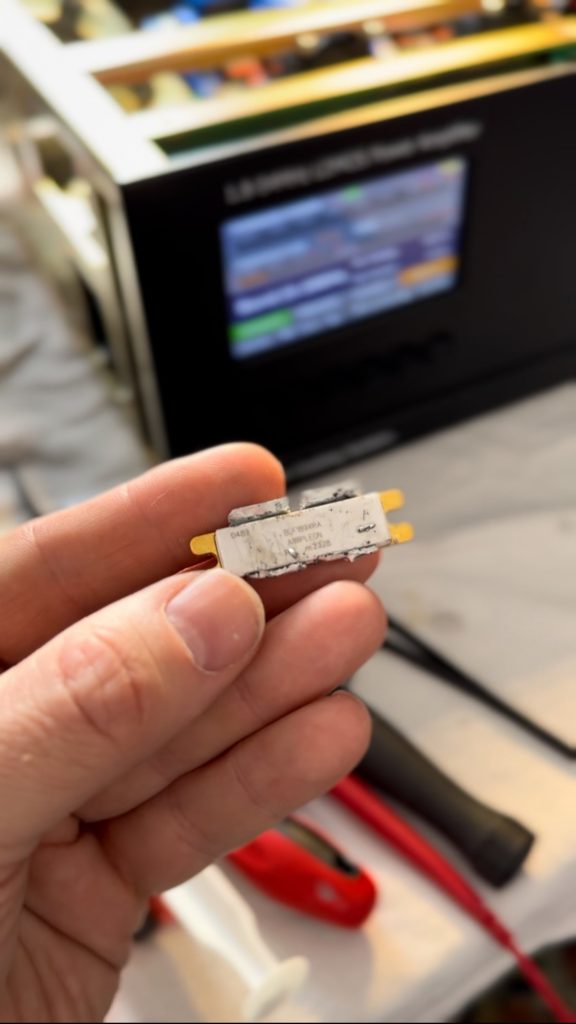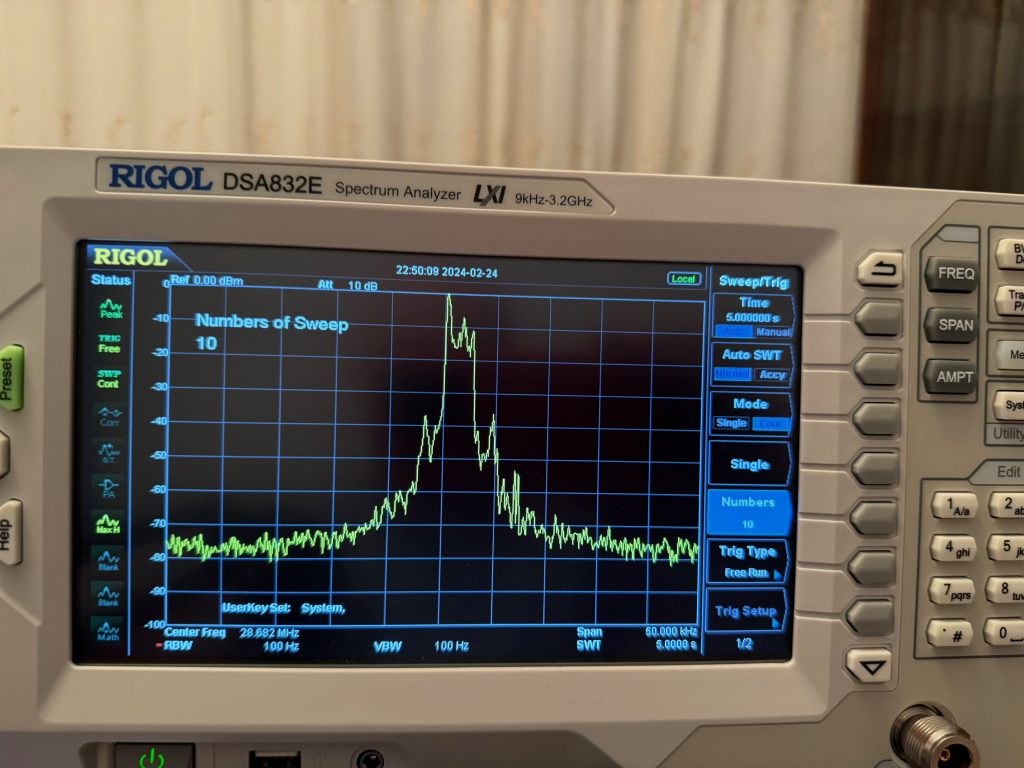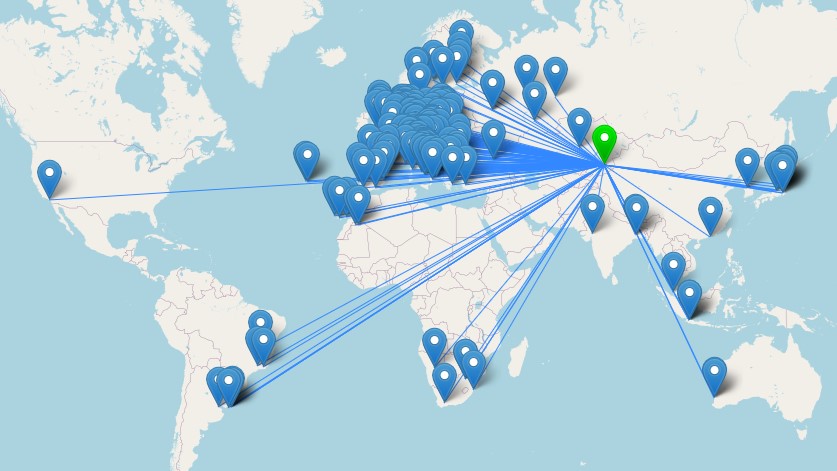Power amplifier
Pre-history
My engineering nature started with radio a very long time ago. Then, it moved to a radio amateur very quickly: I built transceivers, tested them in the air, and built new ones shortly after.
Then, it became my profession. Then, it morphed into autonomous robotics where I enjoy every second of my working life now.
Using somebody’s else equipment for radio is still very strange for me. I am just getting used to it. But I do need to focus on robots more and prevent radio from grabbing too much of my time and energy because radio does it too quickly and too easily 🙂
Thus, mostly to prevent myself from diverting my efforts from robots to radio, I consciously decided to purchase a linear amplifier instead of building it.

Not so fast, babe
Well, not only an amplifier costs quite notable sum of money, I couldn’t purchase it for several months, because the power amplifier was all the time unavailable for various reasons. That puzzled me a lot since, I wanted not to spend precious time on building the PA, however, I was losing the battle to myself and built and tested a basic amplifier by the time I eventually got the ready-to-use one… Well, almost ready-to-use in my case 🙂
Almost, ready to use
The power amplifier that I selected looked nearly perfect for me in terms of:
- Output power
- Price
- Size
- Overall design
- Technical solutions
I liked it right from the beginning when I accidentally learnt about it from my ham radio fellow from Kazakhstan. I saw a video on YouTube and liked nearly everything about the PA. That is exactly how the device must be built (in Russian):
Fix it before enjoying it
Despite my best intentions, I couldn’t avoid spending a few days for fixing the amplifier because I met several impossible issues on the way. It is not the first time impossible things turned out to be possible, but this was one of those very rare cases which is very difficult to debug and solve.
There was some issues with relays – very strange and very nontrivial issues. For example, relay that was supposed to have a 160 Ohm coil, had a 430 Ohm coil… How?!!! It is either correct or completely dead. How can it be 3 times more?! As a result, the relay worked for disconnecting the TX/RX switch but it didn’t work for connection – enough current to disconnect but not enough to connect. Very weird.
Then, it was even more weird. Since I was trying to access the bottom filter board, I had to put the PA on its narrow side … as a result, the relay was in a different position against the gravity. And it could work for connection – just enough the weight to connect the connector. When the PA was in a different position – not enough…
This is highly unusual and very difficult to debug because these were not only very unusual malfunctions but a combinations of them, which makes it even more difficult to pinpoint and debug.
Then, there were related issues with alarms.
It was quite a challenge to identify to cause for all these issues, and we spent in a WhatsApp call with Alexey – designer of the PA – several hours over the course of several days while trying to pinpoint the exact reasons for the problem. Alexey offered to ship the transceiver back to be fixed but I didn’t want to lose some weeks shipping back and forth and risking the customs clearance on the way.
By the time, the impossible issues with the relays was solved after multiple re-soldering of them, the PA was more than a half disassembled … I felt like I purchased a very promising car but I needed to re-assemble and fixed the car before racing with it.
The relays-related issues were fixed eventually but one of the transistors (an expensive one) was killed in action. I had to wait for the replacement to come.

Unsoldering a powerful transistor from the PA board when it is screwed to a massive copper heatsink is a very challenging task. I spent several hours doing that.
Regular hot air gun didn’t work at all. Eventually, I managed to unsolder the transistor using two soldering irons at once … But I needed another hand to pull the transistor. Unfortunately, I didn’t have the third hand … 🙂
Actually, I needed four soldering irons and five hands at once, but that I didn’t have either … Thus, it was quite a feat – to unsolder the transistor and not kill the board on the way.
When it was eventually done and it was a time to put a new transistor, I hesitated a bit … when I played with my own amplifier, the transistor heated locally very quickly. Heatsink paste didn’t help much. Thus, I soldered the transistor to a copper heatsink in my power amplifier. That made everything much better right away in terms temperature.
Here, I couldn’t do that. Thus, I had to be particularly attentive to spread the paste, screw the transistor tightly to the heatisink but not over the limits and so on.
And then I turned on the amplifier to set the bias current and nothing … absolutely nothing and no help from Alexey because he operated on weekdays but I work on the weekdays. I was upset.
I spent the whole day to unsolder and unsolder … and nothing… pity, pity.
The next morning, I thought to work in the air and to make a more relaxing day out of it… but it was difficult to be relaxed when you hear VK stations well but they don’t hear you and do not respond…
I again turned to the PA… there was no bias voltage and all cables and connections seemed to be OK … I tried several times several things. In vane.
Eventually, it turned out everything was OK but I used an automatic mode for the band selection. It was impossible to set the bias current in those conditions. When turned the power amplifier to the manual band selection mode, it was a matter of minutes before the current was set … and very-very desired 1,000 W was eventually in the air! 🙂
High power comes with high responsibility
I see quite often very wide spectrum from some of the hams, which is quite impolite. I didn’t want to be one of those. Thus, of course, I checked the spectrum of the radio amplifier. I wanted to be in the air finally as much and as soon as possible, because the weekend was nearly over. But I also wanted to be sure that I am a gentleman in the air – not a rude loud guy who doesn’t care about the adjacent channels and fellow hams. The results I liked:

It is worth it
When you start calling CQ, CQ, and finally VK, ZS, CX and PU stations respond to your call and give you decent reports, you understand that it is worth the efforts and finally everything is in order 🙂
Let’s hope that the amplifier will work long and bring a joy of DXing. God bless MOSFETs and electronics in general. While I had been away from the air, many things changed to a positive way 🙂

Q&A
Q: Can I recommend the amplifier model that I have got?
A: Yes, it is a well-built PA. Very nice engineering overall. Good housing, good boards, very good heating and RF cables and filters. What could be better:
- Since I love traveling and portable operations, I would prefer an aluminum chassis
- Fans may be completely silent wheh I am not transmitting and the heatsink is cold – unnecessary noise. Is the noise loud? – not at all. But like with laptops, when they are not quite but silent, it is beautiful
- Digital cables may be prone to disattachment. I can’t say for sure how to fix them better inside the chassis and whether it could be an issue but something could be improved
I give a firm A- to the amplifier and can recommend it. Of course, I played with it very little so far and that is just the first impression, but as we know, the first impression you can have only once 🙂
If you are not as technical and impatient as I am and face any issues like I did, just send the amplifier back to be fixed. I couldn’t wait, fixed it on the spot with a remote help but I do enjoy it much eventually.
Random post
Categories
Tags
| M | T | W | T | F | S | S |
|---|---|---|---|---|---|---|
| 1 | 2 | 3 | 4 | 5 | 6 | 7 |
| 8 | 9 | 10 | 11 | 12 | 13 | 14 |
| 15 | 16 | 17 | 18 | 19 | 20 | 21 |
| 22 | 23 | 24 | 25 | 26 | 27 | 28 |
| 29 | 30 | 31 | ||||
